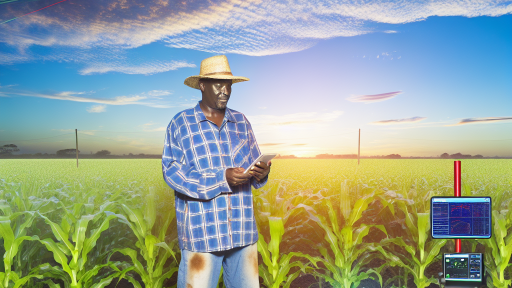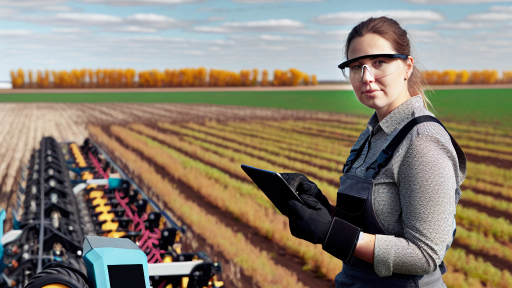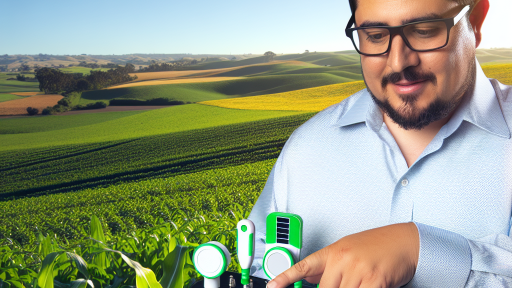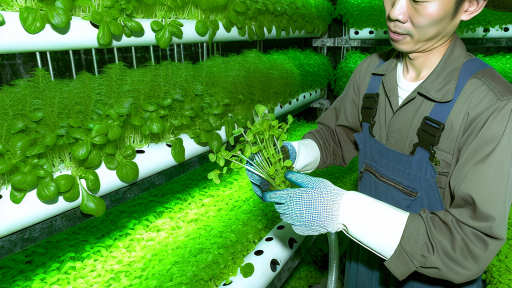Introduction to Sustainable Farming
Definition of Sustainable Farming
Sustainable farming refers to agricultural practices that prioritize environmental health.
This approach aims to produce food while conserving resources.
Farmers use methods that improve soil quality and reduce pollution.
Moreover, sustainable farming supports biodiversity and ecosystem health.
Importance of Sustainable Farming
Sustainable farming is crucial for addressing global food security challenges.
It helps mitigate climate change by reducing greenhouse gas emissions.
Additionally, it ensures the longevity of agricultural practices.
Farmers adopting sustainable methods often enjoy increased resilience to climate impacts.
Components of Sustainable Farming
Several key components make up sustainable farming practices.
- Crop rotation enhances soil health and disrupts pest cycles.
- Organic farming minimizes the use of synthetic chemicals.
- Permaculture designs create harmonious agricultural systems.
In addition, agroforestry integrates trees into farming systems.
This approach promotes biodiversity and improves landscape resilience.
Data Supporting Sustainable Farming Practices
Numerous studies highlight the benefits of sustainable farming.
A report from the Food and Agriculture Organization revealed improved crop yields.
Furthermore, sustainable practices can reduce costs for farmers in the long run.
Transitioning to sustainable methods can lead to healthier ecosystems and communities.
Transform Your Agribusiness
Unlock your farm's potential with expert advice tailored to your needs. Get actionable steps that drive real results.
Get StartedData-Driven Approaches in Sustainable Agriculture: An Overview
Introduction to Data-Driven Agriculture
The world of agriculture is rapidly evolving with technology.
Data-driven approaches are central to this transformation.
Farmers increasingly rely on data to make informed decisions.
This shift leads to greater efficiency and more sustainable practices.
Benefits of Data Utilization
Data utilization offers numerous benefits for farmers.
First, it enhances crop yield predictions.
Second, it improves resource management.
Third, it reduces environmental impacts.
Farmers can analyze weather patterns to optimize planting times.
Additionally, data helps in monitoring soil health and moisture levels.
Data Sources for Sustainable Practices
A variety of data sources exist for farmers today.
- Remote sensing technologies provide satellite imagery.
- Drone technology offers detailed aerial views.
- Soil sensors measure nutrient levels in real-time.
- Weather forecasting systems predict climate variations.
These tools empower farmers to make timely and effective decisions.
Case Studies in Data-Driven Farming
Several farms have successfully implemented data-driven approaches.
One example is Green Valley Farms.
This farm uses soil sensors to monitor nutrient levels.
As a result, they optimize fertilizer use and increase yield.
Another example is EcoHarvest Inc.
They utilize drones to assess crop health consistently.
This strategy enables targeted interventions, reducing waste.
Challenges in Implementing Data-Driven Solutions
Despite the benefits, challenges remain in implementation.
Many farmers struggle with the costs of new technologies.
Additionally, there are concerns about data privacy and security.
Farmers may also require training to use these tools effectively.
Future Outlook for Data-Driven Agriculture
The future of agriculture looks promising with data-driven approaches.
Showcase Your Farming Business
Publish your professional farming services profile on our blog for a one-time fee of $200 and reach a dedicated audience of farmers and agribusiness owners.
Publish Your ProfileAs technology advances, costs will likely decrease.
This shift could lead to broader adoption among farmers.
Ultimately, sustainable agriculture will benefit the global food system.
Continuous research and development will enhance these methods.
Case Studies: Successful Implementation of Sustainable Farming Practices
Introduction to Sustainable Case Studies
Numerous farms have successfully implemented sustainable practices.
These case studies provide valuable insights into effective methods.
They also demonstrate the benefits of sustainability in agriculture.
Regenerative Agriculture in California
Smithson Farms in California adopted regenerative agriculture practices.
They shifted from conventional to no-till farming.
This method reduced soil erosion and improved soil health.
Moreover, crop yields increased by 30% over three years.
They also reported enhanced biodiversity on their land.
Crop Rotation in Iowa
Greenway Organic Farms in Iowa utilizes crop rotation.
This practice reduces pests and diseases naturally.
Consequently, chemical pesticide usage dropped by 50%.
Farmers reported improved soil nutrients through this method.
As a result, their overall productivity improved significantly.
Vertical Farming in Urban Areas
UrbanGrow implemented vertical farming techniques in New York City.
This innovative approach uses less water and space.
As a result, they produce 50% more crops per square foot.
Additionally, local communities benefit from fresh produce.
UrbanGrow effectively reduces transportation emissions as well.
Integrated Pest Management in Florida
This approach combines biological control with minimal pesticide use.
They observed a 40% reduction in pest-related crop loss.
This resulted in higher profitability and healthier crops.
Moreover, it promoted a safer environment for workers.
Sustainable Livestock Farming in Texas
Hilltop Ranch practices sustainable livestock management techniques.
They use rotational grazing to maintain pasture health.
This method reduces overgrazing and enhances soil fertility.
Additionally, it leads to improved animal welfare conditions.
Their beef production is now fully sustainable and organic.
Community Impact and Education
These case studies provide education for other farmers.
They showcase practical implementation of sustainable practices.
Moreover, sharing results fosters community engagement.
As a result, more farms are inspired to follow suit.
Ultimately, these practices benefit the environment and society.
Learn More: Choosing The Right Agri-Robotic Solutions
Soil Health and Management
Importance of Soil Health
Soil health plays a critical role in sustainable farming.
Healthy soil fosters plant growth and increases productivity.
Showcase Your Farming Business
Publish your professional farming services profile on our blog for a one-time fee of $200 and reach a dedicated audience of farmers and agribusiness owners.
Publish Your ProfileMoreover, it enhances water retention and quality.
Additionally, it supports a diverse ecosystem in the soil.
Techniques for Improving Soil Health
Farmers can implement various techniques to boost soil health.
- Crop rotation encourages nutrient cycling.
- Cover crops prevent soil erosion and retain moisture.
- No-till farming minimizes soil disturbance.
- Adding organic matter enhances soil structure and fertility.
Research-Backed Practices
Studies reveal the effectiveness of these practices in enhancing soil health.
For instance, organic amendments have proven beneficial.
Incorporating compost improves microbial activity and nutrient availability.
As a case study, Johnson Farms reported a 30% increase in yield after adopting these practices.
Monitoring Soil Health
Regular monitoring helps farmers understand soil conditions.
Soil testing provides insights into nutrient levels and pH balance.
Farmers can adjust their practices based on these results.
For example, nutrient deficiencies can be addressed through targeted fertilization.
Implementing Sustainable Practices
Transitioning to sustainable practices is crucial for long-term success.
Farmers can slowly integrate new techniques into their existing systems.
Education and community support aid this transition.
Furthermore, collaboration with agricultural experts ensures informed decisions.
Explore Further: Enhancing Crop Monitoring with Precision Agriculture
Water Conservation Strategies
Importance of Water Conservation
Water conservation is vital for sustainable farming practices.
It ensures that agricultural needs are met without depleting resources.
Moreover, effective water management can enhance crop yields.
Farmers must understand their water usage for long-term benefits.
Techniques for Efficient Water Usage
Several techniques can help farmers use water efficiently.
First, implementing drip irrigation systems delivers water directly to the roots.
This method minimizes wastage and improves plant health.
Additionally, scheduling irrigation during cooler hours reduces evaporation.
Farmers should monitor soil moisture to avoid over-irrigation.
Data-Driven Decision Making
Utilizing data analytics can significantly boost water efficiency.
Farmers can use sensors to gather real-time data on moisture levels.
Applying this data helps determine the right amount of water needed.
Moreover, weather forecasting provides insights into rainfall patterns.
This information allows farmers to schedule irrigation wisely.
Benefits of Rainwater Harvesting
Rainwater harvesting is an effective conservation strategy.
This method captures and stores rainfall for agricultural use.
Consequently, it reduces reliance on traditional water sources.
Farmers can install tanks or reservoirs for better efficiency.
Community Engagement and Education
Engaging local communities fosters a culture of water conservation.
Workshops and training sessions can educate farmers on best practices.
Sharing success stories encourages others to adopt similar techniques.
Furthermore, collaboration can lead to more innovative solutions.
Monitoring and Evaluation
Regular monitoring of water usage is essential for improvement.
Farmers should assess their methods periodically.
Showcase Your Farming Business
Publish your professional farming services profile on our blog for a one-time fee of $200 and reach a dedicated audience of farmers and agribusiness owners.
Publish Your ProfileThis assessment will highlight areas for potential enhancement.
Using performance metrics can guide future conservation efforts.
See Related Content: Sustainable Energy Planning for Future-Focused Farms
Integrated Pest Management (IPM): Balancing Ecosystems and Productivity
Understanding IPM
Integrated Pest Management combines various control methods.
This approach reduces reliance on chemical pesticides.
It integrates biological, cultural, physical, and chemical strategies.
Additionally, it prioritizes ecological balance and sustainability.
Key Principles of IPM
- Preventive practices minimize pest establishment.
- Monitoring pest populations helps make informed decisions.
- Threshold levels determine when control measures are needed.
- Diverse control tactics enhance overall effectiveness.
Benefits of IPM
IPM promotes healthier ecosystems by maintaining biodiversity.
It reduces the risk of pesticide resistance in pest populations.
This method also lowers production costs by minimizing chemical use.
Moreover, it enhances crop yields sustainably.
Case Studies Supporting IPM
A study by Dr. Emily Vargas demonstrated effective pest control using IPM in tomato crops.
Farmers reported a 30% reduction in pesticide application after adopting IPM practices.
Similarly, data from Green Valley Farms showed improved yields and reduced pest issues.
Implementing IPM on Your Farm
Begin with a thorough assessment of your current pest situation.
Next, develop a monitoring plan to track pest populations.
Incorporate diverse strategies based on specific pest challenges.
Engage with local agricultural extension services for additional support.
Uncover the Details: Robotic Innovations Boosting Farm Efficiency
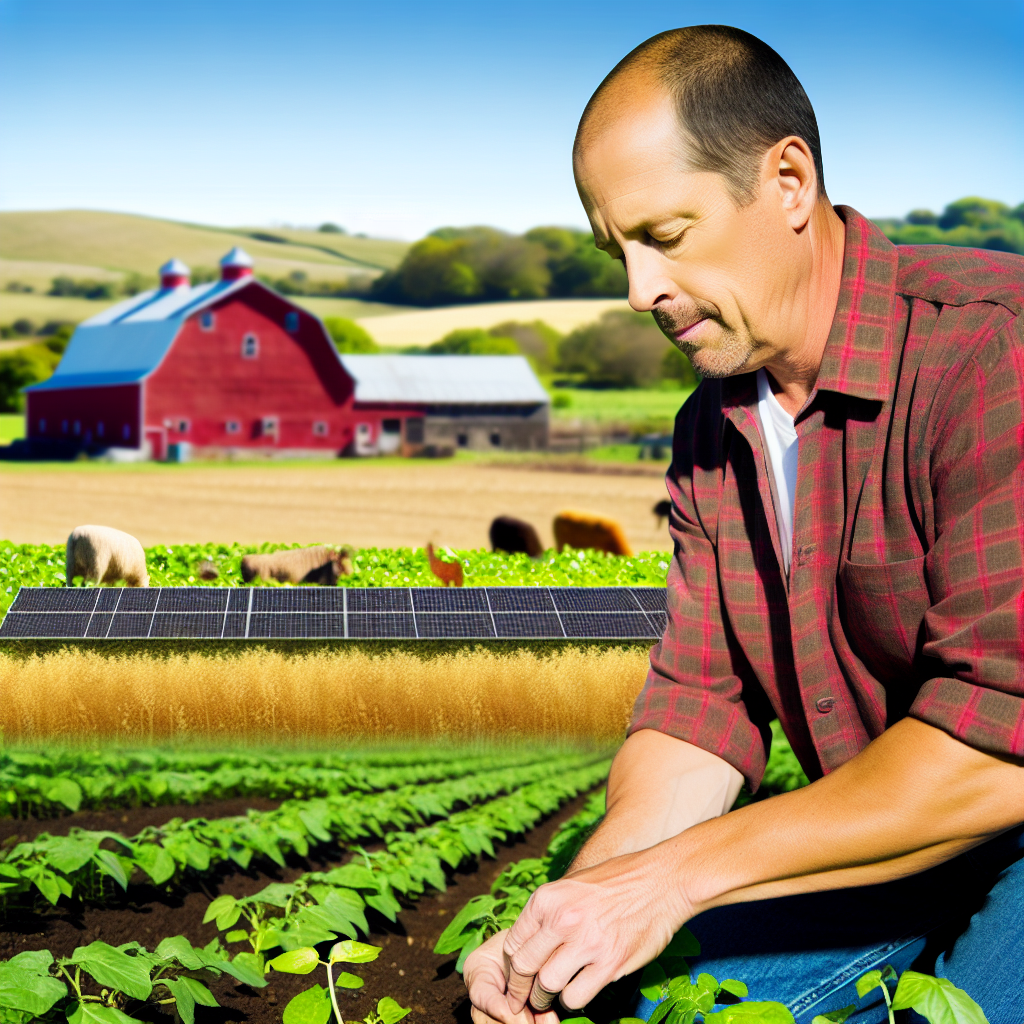
Crop Rotation and Diversity: Statistical Evidence of Increased Yields
Introduction to Crop Rotation
Crop rotation involves changing the type of crop grown in a particular area each season.
This practice helps to improve soil health and fertility.
Research indicates that crop rotation can significantly enhance yields.
Several studies show that diverse crop planting increases farm productivity.
The Science Behind Crop Rotation
Crop rotation breaks pest and disease cycles effectively.
It reduces the reliance on chemical fertilizers and pesticides.
Moreover, it promotes greater biodiversity in farming systems.
This biological diversity leads to stronger ecosystems overall.
Statistical Evidence Supporting Crop Diversity
A study conducted by the American Agricultural Research Institute found significant data.
Fields with crop diversity recorded a 20% increase in yields over monoculture systems.
Additionally, rotating legumes with other crops improves nitrogen levels in the soil.
Farms that practice diverse crops are often more resilient to climate fluctuations.
Implementing Crop Rotation Strategies
Farmers should start with a simple rotation plan that suits their land.
For instance, alternating between a legume and a cereal crop can be beneficial.
Utilizing a cover crop during the off-season can also bolster soil health.
Engaging with local agricultural extension services can provide helpful insights.
Real-World Examples
The Johnson Family Farm in Iowa successfully uses crop rotation.
They reported a 25% increase in yield after five years of rotation practices.
Similarly, GreenPasture Organic Farms adopted a diverse planting schedule.
They saw improved soil conditions and higher crop quality as a result.
Challenges and Considerations
Implementing crop rotation may require initial adjustments in farming methods.
Showcase Your Farming Business
Publish your professional farming services profile on our blog for a one-time fee of $200 and reach a dedicated audience of farmers and agribusiness owners.
Publish Your ProfileSome farmers may experience a learning curve when introducing new crops.
However, the long-term benefits generally outweigh these initial challenges.
Farmers are encouraged to monitor their results closely for adjustments.
Technology in Sustainable Farming: Innovations Supported by Data
Precision Agriculture
Precision agriculture uses technology to optimize farming practices.
It employs data from satellite imagery and sensors.
This technology helps farmers identify soil and crop needs accurately.
As a result, they can apply resources more efficiently.
The benefits include reduced waste and improved crop yields.
Drones and Aerial Imaging
Drones offer a new perspective on crop health.
They can take aerial images to monitor plant growth.
This data drives timely decisions on water and nutrient applications.
Furthermore, drones help identify pest problems early.
Thus, farmers can respond before significant damage occurs.
Data Analytics in Crop Management
Data analytics supports informed decision-making in farming.
Farmers analyze historical weather data and market trends.
This analysis informs planting schedules and crop selection.
Additionally, it helps in predicting yield and pricing strategies.
Consequently, farmers enhance profitability and sustainability.
Smart Irrigation Systems
Smart irrigation systems use sensors to manage water usage.
They provide real-time data on soil moisture levels.
This technology enables precise watering according to plant needs.
As a result, it conserves water while maximizing crop growth.
Moreover, it reduces costs associated with over-irrigation.
Biotechnology and Genetic Engineering
Biotechnology plays a crucial role in sustainable farming.
Genetic engineering creates crop varieties with enhanced traits.
These may include drought resistance and disease resistance.
This innovation boosts yields while using fewer resources.
Therefore, farmers can operate more sustainably.
Farm Management Software
Farm management software streamlines farming operations.
It tracks inputs, labor, and financials efficiently.
Farmers can monitor their production and costs in real-time.
Such tools enhance operational efficiencies and profitability.
Consequently, they support long-term sustainability goals.
Future Trends: Predictive Analytics and the Next Generation of Sustainable Practices
The Role of Predictive Analytics
Predictive analytics plays a crucial role in modern agriculture.
It helps farmers forecast crop yields based on historical data.
This technology also analyzes weather patterns to improve planning.
By integrating predictive models, farmers can better manage resources.
Data-Driven Decision Making
Data-driven decision making enhances the efficiency of farming operations.
Farmers can utilize real-time data to assess soil health.
This enables them to make timely adjustments to nutrient management.
Showcase Your Farming Business
Publish your professional farming services profile on our blog for a one-time fee of $200 and reach a dedicated audience of farmers and agribusiness owners.
Publish Your ProfileConsequently, they can optimize water usage for irrigation.
Enhanced Crop Management
Predictive analytics allows for enhanced crop management practices.
Farmers can identify potential pest threats before they escalate.
This early detection reduces the need for chemical interventions.
Furthermore, it promotes healthier crop yields and minimizes losses.
Collaboration Among Stakeholders
Collaboration among stakeholders fosters innovation in sustainable farming.
Farmers, researchers, and tech companies share valuable insights.
This partnership accelerates the development of effective agricultural solutions.
As a result, sustainable practices become more widely adopted.
Next Generation Technologies
Next generation technologies are shaping future farming practices.
For instance, drone technology provides aerial farm analysis.
This shows precise nutrient levels and plant health indicators.
Moreover, artificial intelligence aids in crop disease prediction.
Sustainable Practice Integration
Integrating predictive analytics with sustainable practices is essential.
Farmers can adopt precision agriculture techniques for resource efficiency.
This reduces waste and lowers operational costs significantly.
Ultimately, this benefits both the environment and the agricultural economy.
Looking Ahead
The future of sustainable farming relies heavily on technology.
Predictive analytics will continue to evolve and improve.
Farmers must embrace these advancements to thrive sustainably.
Ultimately, this dedication ensures a positive impact on global food security.

